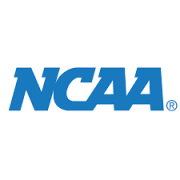If I were to ask you the last time you had a really great experience as a customer, it probably wouldn’t take you long to come up with the story of how the lasting impression of the experience made you happy and satisfied.
And the same goes for a poor customer experience, too — you could probably think of the story and reason within seconds, and how the feeling afterward was just the opposite. You probably felt angry, upset, annoyed, frustrated, or any combination of these negative emotions.
A positive customer experience not only results in making your customer happy, but it can also lead to additional revenue. The best marketing money can buy is a customer who will promote your business — because they’ll refer their friends and family to you, free of charge.
The way you think about customer experience has probably had a profound impact on how you look at your business as a whole. This is just one reason why creating and obsessing over a great customer experience is so important. And if the customer experience you’ve created is not great, how to improve it and where to start.
Before we differentiate a good or bad customer experience, or for that matter, how to improve it, we first need to understand what customer experience even is.
What is customer experience?
The best way to define customer experience is as the impression you leave with your customer, resulting in how they think of your brand, across every stage of the customer journey. Multiple touchpoints factor into the customer experience, and these touchpoints occur on a cross-functional basis.
The two primary touchpoints that create the customer experience are people and product. Are you blown away by the performance of the product? Are you delighted by the attention a customer support rep gives you to help solve your problem? These are some general examples of what factors are at play when creating a great customer experience.
Since multiple teams impact the customer experience, let’s break down how to measure performance to see if you’re on the right track.
Importance of Customer Experience
Customer experience is of critical importance to the sustained growth of a business. It’s important to ensure a positive customer experience so customers build brand loyalty and affinity, evangelize your product or service and refer their friends, and leave you positive customer reviews that will help your business retain revenue and earn new customers.
In 2018, the customer matters more than ever before. Customers have the power, not the sellers. Who gave them this power? Us — with help from the world wide web. Customers have more options than ever (your competitors), greater ease of switching power than ever (with so many subscription and freemium options), and more power to influence your business than ever (using social media and online reviews).
But it’s definitely a change for the best. Customers are your best resource for growing your brand awareness in a positive way — because their recommendations shared with friends and family are more reliable than your marketing and advertising channels.
We’ve spoken about how customer the customer experience is ultimately how the customer feels about your brand. So ask yourself, what happened the last time you had either a great or terrible customer experience? You probably went to a friend or coworker to tell them the story, or you went to your social networking channels to broadcast your feelings to the world.
As a company, you have to take this personally and obsess over the reasons why people feel the way they do about you — it’ll dramatically help you grow your business.
How to Measure Customer Experience
- Analyze customer satisfaction survey results.
- Identify rate and reasons for customer churn.
- Ask customers for product or feature requests.
- Analyze customer support ticket trends.
1. Analyze customer satisfaction survey results.
Using customer satisfaction surveys on a regular basis, or after meaningful moments along the customer journey, will give you an idea of your customers’ experience with your product or service.
A great way to measure customer experience is Net Promoter Score®, or NPS. This measures how likely your customers are to promote you to their friends, family, and colleagues and that’s determined by the experience you provide.
When measuring NPS, be sure to consider data in aggregate across teams. Since multiple teams impact the customer experience, we need a clear picture of performance, and that comes from multiple data points. What is the NPS for in-product usage? What is the NPS for customer service teams across communication channels (phone, email, chat, etc.)? What is the NPS for sales? What is the NPS for attending a marketing webinar?
Multiple data points must be considered to determine the NPS of the overall customer experience. Your customers probably want to share their feedback, so let them. Analyzing NPS from multiple touchpoints across the customer journey will tell you what you need to improve, where you’re excellent, and which customers you can connect with and engage in advocacy and evangelism.
It’s easy to skew NPS results, so be true to the data and take it personally when you see what your customers think of you. If the results show a poor customer experience, be open to making changes and take results personally. If the results show a great customer experience, dive deeply into team-by-team performance to ensure you’re meeting standards across the board. And make sure you’re following up on customer feedback — whether it’s positive or negative, connecting with customers can deepen your relationship and improve your customer retention and loyalty outcomes.
2. Identify rate and reasons for customer churn.
Churn happens — it’s part of doing business. But it’s important that you learn from churn when it happens so you can (hopefully) prevent it from happening for the same reasons.
Make sure you’re doing a regular analysis of your churned customers so you’re identifying if churn rate is increasing or decreasing, the reasons why the customers churned, and what action your team could take in the future to prevent a similar customer from walking out the door.
3. Ask customers for product or feature requests.
Create a forum for your customers to request new products or features to make your offerings more useful and helpful for the problems they’re trying to solve. Whether that forum is an email survey, on social media, or on a community forum, give customers the opportunity to proactively offer suggestions. This doesn’t mean you must implement all of the customers’ suggestions. But if there are recurring trends cropping up again and again, they might be worth digging into with some additional research to see if they would be worth investing some R&D in.
4. Analyze customer support ticket trends.
Another regular practice to ensure you’ve created a positive customer experience is to dig into the tickets your customer support team is tackling every day. If there are recurring issues that cause a lot of pain for your customers over an extended period of time, take the effort to try to resolve them — either with clearer in-app or product instructions, explainer videos or articles, or product tweaks to make the process easier.
How to Make a Great Customer Experience
To make a great customer experience, you need to: build a customer journey map and buyer personas so you can effectively understand and solve their challenges, build a positive connection with your customers, ask for and act on feedback from customers and employees on how to improve, create helpful educational content, and build communities for your audience.
As we’ve discussed, there are a variety of touchpoints in the customer experience, so the first action required to improve the customer experience is to identify which touchpoint to start with. This will vary by industry and business, and this blog post details how to identify and improve these key touchpoints to make a significant difference.
For businesses with customer service teams that take incoming calls, think about reducing the customer hold time or service agent quota to ensure your customer service teams have the resources they need to provide a high-quality experience.
Poor Customer Experience Example
At this point, we’ve probably all endured a crummy customer experience. The stories seem pretty endless — however, in an age of technology, one stood out to me beyond the rest, in an area you may not think of so quickly.
Blake Morgan wrote about Groupon and how difficult it is to delete a basic account, and how that creates such a poor experience. Transparency is vital in creating a great customer experience, so it leads to an uneasy feeling when a company makes it seem impossible to leave. Everyone expects to be able to go into their online account and go into account settings to deactivate or delete their account and confirm the deletion — and that’s just not possible in this case.
Morgan explains that the rationale for this may be to inflate user metrics. Higher user numbers confirm to key stakeholders that their marketing strategies are working when in reality, they may just be preventing users from leaving on their own. When a company isn’t transparent, it can be the result of bad practices, and those practices translate into a poor experience.
Companies that provide consistently good customer experiences make an effort to delight customers at every touchpoint — and offer transparency along the way.
Exemplary Customer Experience Example
Earlier this month was Pi Day — March 14th, or 3.14. I’m a bit of a math geek, so I personally get giddy about those little things. Why is this relevant to a great customer experience? Simple. A pizza company in Boston, Blaze, ran a promo that created a great customer experience — by offering discounted pizza pies (get it?) for only $3.14.
The promo was sent over email, but it was available in-store without having to pull out your phone or a coupon. The store I went to was a packed out, but, every employee I interacted with greeted me by name and thanked me for coming in for the very first time. I felt appreciated and welcomed, regardless of how many customers were waiting. In Boston, where lunch options are plentiful, experiences like these matter — because I went back to my desk and told my coworkers and friends about the deal — some of whom ended up checking out this deal for their dinner that same night.
There were a few things about this experience that made my Pi Day so great:
First, being part of Blaze’s email list was key. I never receive more than one email a week, and this one was highly relevant, with a day-of offer I actually cared about.
Second, the ease of the experience left me with a positive impression. I didn’t need to use my phone or print out a coupon code to take advantage of the deal, and despite it being incredibly busy, I was greeted and served kindly and quickly by the team.
Third, I went to Blaze with my girlfriend, who asked for a gluten-free pizza crust. Sometimes, when you have allergies or dietary restrictions, you get a grunt when your request requires workers to change gloves, clean the surface areas, and switch out utensils — but not this time. Employees all stopped for a few moments to swap out their gloves, wipe down the area, and retrieve out the gluten free crust and to prepare it for use. Right there, they created a level of trust through their accommodations and transparency.
And for what it’s worth, the pizza was delicious — and sometimes, customer experience is as simple as that. I ate the entire pi (get it?) in one sitting for less than half of the typical price.
I was able to write an entire blog post about it, so you can rest assured that customer experience is extremely important to your customers. Identifying key touchpoints along your customers’ journey, collecting customer feedback to improve or keep iterating on those experiences, and analyzing trends will help you improve customer sentiment about your company — and keep them telling their friends and family about your organization.

![video-content-stats[1]](https://mgconsultantservices.com/wp-content/uploads/2019/05/video-content-stats1-180x180.jpg)









